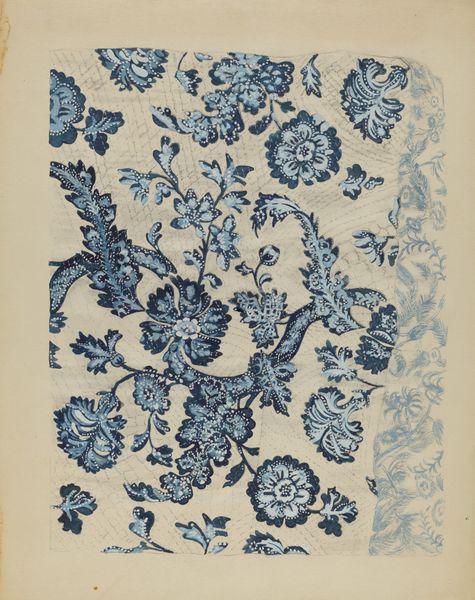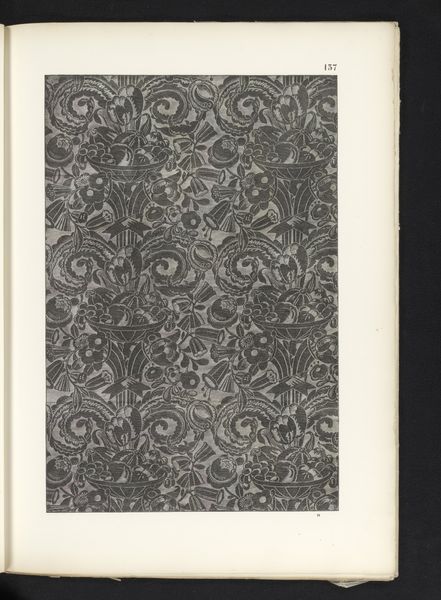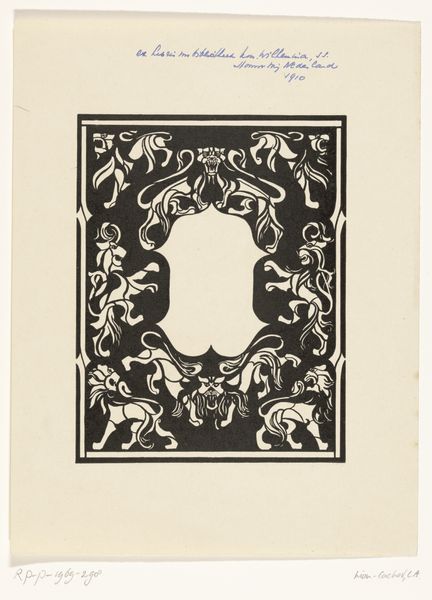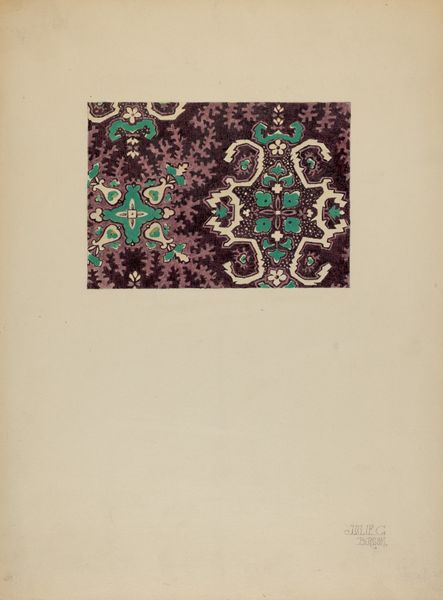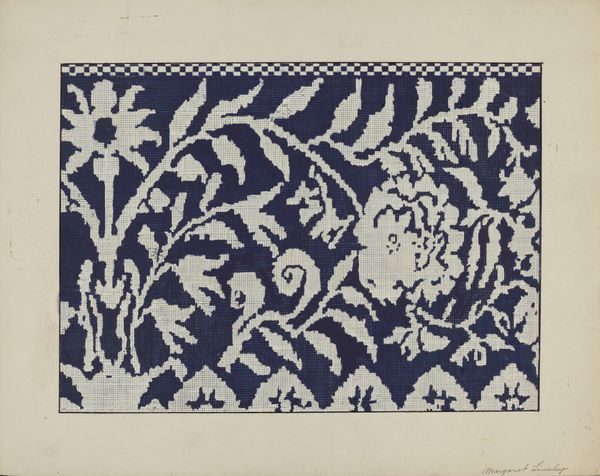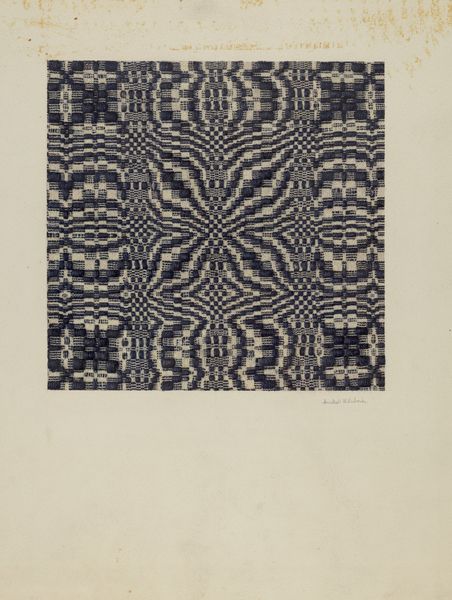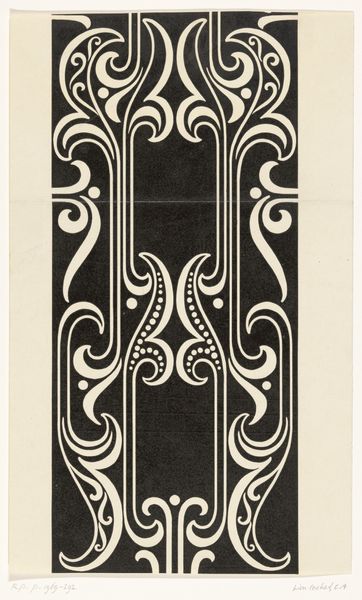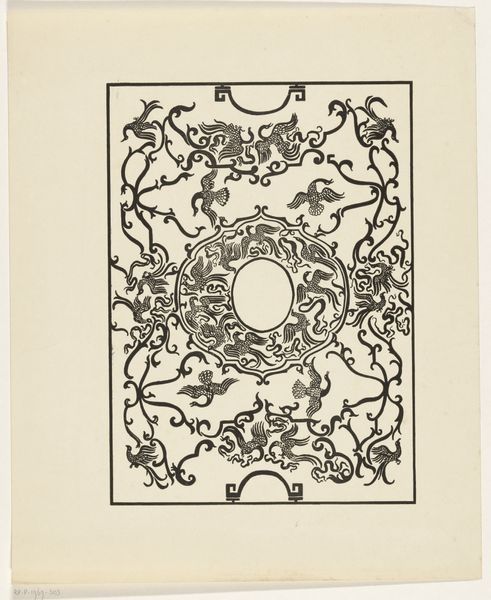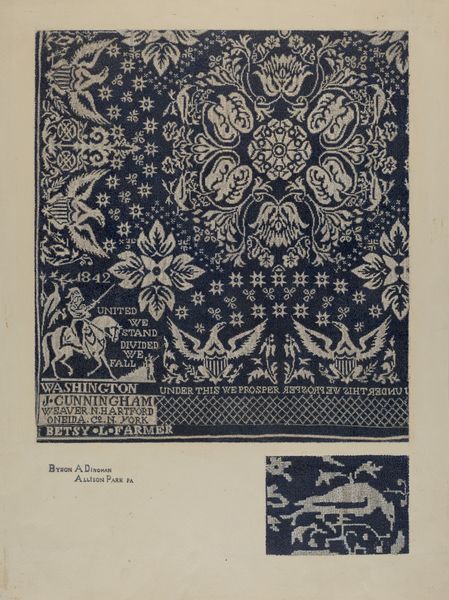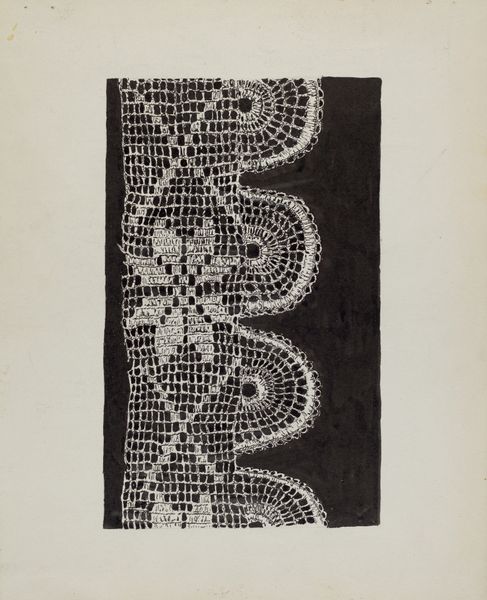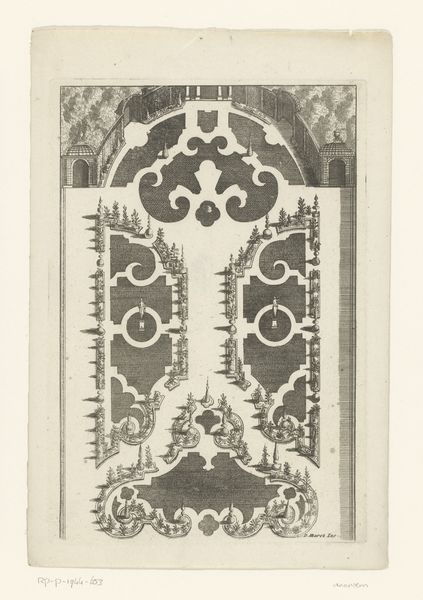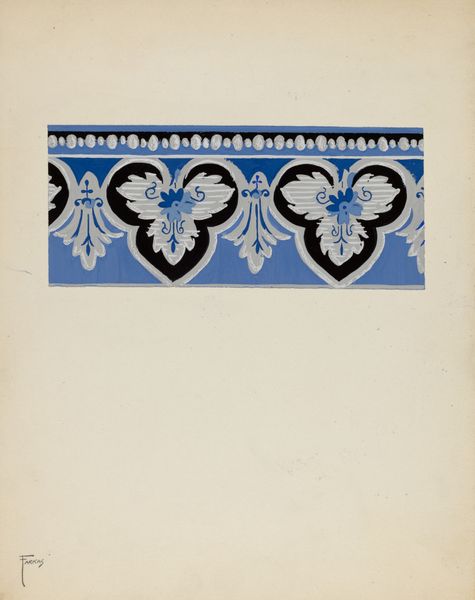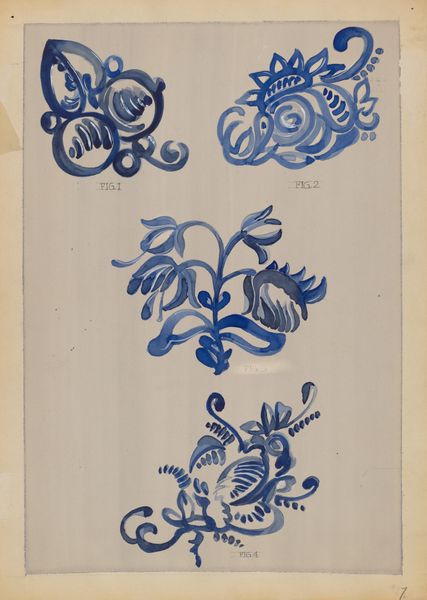
drawing, graphic-art, print, textile, woodcut
#
drawing
#
graphic-art
#
ink paper printed
# print
#
pattern
#
textile
#
woodcut
#
decorative-art
Dimensions: overall: 51 x 38 cm (20 1/16 x 14 15/16 in.) Original IAD Object: 90" long; 83" wide
Copyright: National Gallery of Art: CC0 1.0
Curator: Before us, we have a print titled "Coverlet" created around 1939 by Henry Moran. It is a work showcasing textile design through the medium of woodcut, featuring a repeating pattern of floral and foliage elements in contrasting dark and light hues. Editor: Immediately, the design evokes a sense of folk art tradition—perhaps even referencing older weaving techniques. There’s a stillness to the print, despite the rhythmic repeat; almost as though the maker stilled the loom's action to fix it on paper. Curator: Indeed. Textile patterns frequently convey cultural identity. The symbols of flowers and vines, repeated motifs from nature, have always been fundamental to human creativity, particularly as expressions of cultural belonging and shared knowledge. Notice the bilateral symmetry evident in each of the motifs. Editor: I can see those mirroring forms; and there's an interplay of positive and negative space too, the dark blues contrasting with the paler areas. I would imagine this piece may reflect on textile labour practices and gendered craftwork in early 20th century. Were women working on creating similar bedcovers, imbuing them with personal stories of craft production? Curator: Precisely. These handcrafted textiles are laden with personal, social, and political associations. Furthermore, the repeated image reminds me of continuous generations, tradition, and cultural history made visual. Editor: Right! I can really see it as a form of documentation. And also considering Henry Moran's background, the act of printing this piece, translating textile work into print, may have carried connotations about democratizing design, sharing a historically feminine practice into broader circulation... Curator: I think it's a powerful demonstration how patterns act as visual echoes throughout communities. These floral emblems function beyond mere decoration; these symbols offer historical perspective and a framework for reflecting upon themes such as gender and historical representation in the decorative arts. Editor: This conversation really sheds some light on just how a seemingly modest design conceals a potent commentary on gender and textile practices in the early 20th century.
Comments
No comments
Be the first to comment and join the conversation on the ultimate creative platform.
